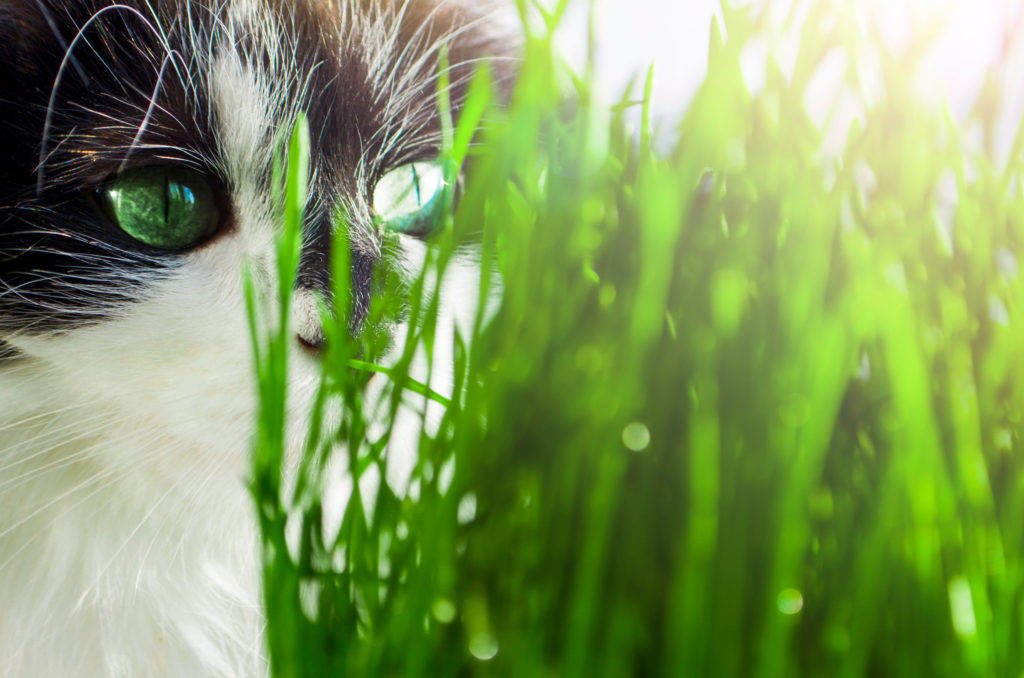
Many people visit Global Pet Foods stores across the country asking for help with their pets who are itching, biting, scratching, or licking. In most cases, an allergy is the culprit. Just like humans, pets can be allergic to foods (or the ingredients), dust, plants and pollens. Dogs and cats have different reactions to some of the same things we’re allergic to, and reactions can range from minor sniffling, sneezing, itching/biting to life-threatening anaphylactic shock. Grass pollen, for example, can make dogs sneeze, give them watery eyes, and have them biting or licking itchy paws or skin.
Depending on the type of allergy, your pet may exhibit different symptoms. Although pets occasionally will have watery eyes and some sneezing, the most common reaction is scratching. Constant scratching may lead to loss of hair, open sores, and raised and infected welts. Many dogs also suffer from ear infections as a result of allergies.
Pets affected by allergies may suffer their entire lives and symptoms generally worsen as they age. There are things that you can do to manage your pet’s pain by understanding the signs of allergies and the products that can help to alleviate their suffering. There are many types of allergies that can affect your pet, as detailed below:
- Allergens: Allergens that are inhaled or come into contact with the skin can cause allergies and common sources are pollens, moulds, and dust mites.
- Flea Allergy Dermatitis: An allergy incurred as a result from flea-bites.
- Food Allergies: Allergies that occur from products your pet ingests which are typically referred to as food allergies.
- Contact Allergies: These allergies are caused by something your pet comes in direct contact with, such as carpet fibers, plastics, etc. and are referred to as contact allergies. NOTE: These are far less common than other allergies.
- Seasonal Allergies: Some pets are allergic to ragweed and those symptoms usually occur in the Fall, while pets who are allergic to spring tree pollen will show signs in April and May. An allergy to dust mites typically presents itself in the winter season when pets spend more time in the house.
- Signs of seasonal allergies can mirror that of food allergies and can include the following:
- Chewing at the feet
- Excessive and constant licking of the flank (side) and groin area
- Rubbing of the face
- Inflamed ears or recurrent ear infections
- Recurrent redness or “hot spots” in dogs and pinpoint facial scabbing in cats
- Hair loss
- Asthma-like wheezing and respiratory problems (more likely in cats)
- Most cats don’t usually suffer from seasonal allergies but will sneeze more often due to physical irritation from pollen. Hair loss, open sores and scabs, discharge from ears, and excessive scratching are also signs of allergies for cats.
- Signs of seasonal allergies can mirror that of food allergies and can include the following:
Food allergies are the most common for pets. If your pet is scratching all year long (and not just during the spring season), a food allergy is most likely the source of the problem. Pets can be allergic to grains, proteins and/or preservatives, and the symptoms will resemble those of seasonal allergies. Pets with food allergies commonly have itchy skin, chronic ear infections or sometimes gastrointestinal problems like diarrhea and vomiting.
To address the problem pet, we recommend a “food trial” which includes limiting the pet to a unique animal protein source such as duck, venison or fish, and a vegetable. A Limited Ingredient Diet will typically include only one meat and one vegetable. You’ll have to restrict all treats and table food until the allergy source can be determined. Over time, you can reintroduce your pet to other proteins, using the process of elimination to determine the allergy source.
Common Symptoms of Allergies:
- EARS
- Appearance
Waxy discharge, redness, odour. - Behaviour
Scratches or rubs ears against the furniture or with their paws
- Appearance
- SKIN
- Appearance
Reddened; possibly with crusts or scales; odour with secondary infections. - Behaviour
Scratching and licking sides/belly, elbows, and/or groin.
- Appearance
- FEET
- Appearance
Inflammation, redness, odour; brown discolouration where licking has occurred. - Behaviour
Licking and chewing of feet/pads
- Appearance
- FACE
- Appearance
Mouth, chin and areas around the eyes reddened with hair loss. - Behaviour
Scratching or rubbing face with paws or against furniture.
- Appearance
- FUR/COAT
- Appearance
Bald spots; brown discolouration where licking has occurred - Behaviour
Scratching sides/belly; rubbing face against furniture or carpet, licking.
- Appearance
There is no cure for allergies in dogs and cats, and identifying and treating the source of an allergy can be tricky. However, the majority of allergies can be effectively controlled with diet change, supplements, or other types of treatments. A licensed veterinarian may need to be consulted for extreme or ongoing cases, while the Healthy Pet Care Specialists at your neighbourhood Global Pet Foods store can assist with product recommendations in many other cases.
